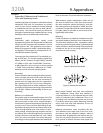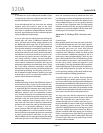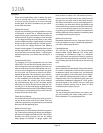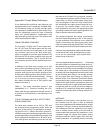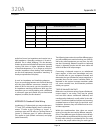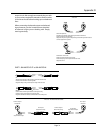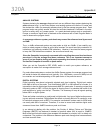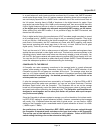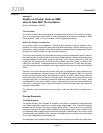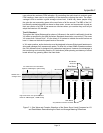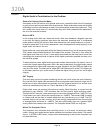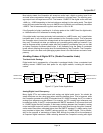
Page 35
In a world where all audio levels would be monitored by VU meters, this SMPTE standard
would make things simple. Since VU meters measure something close to the average level,
we could simply equate 0VU to -20dBFS with a calibration tone. We could mix and track on
the VU meters, knowing there is 20dB of headroom in the digital domain for peaks. Since
most audio has peaks that go 10 to 14dB over the average level, then we would still have 6 to
8 dB of digital headroom left over to allow for subsequent digital overshoots. However, most
of the digital gear is shipped only with peak responding dBFS meters, not VU meters.
When working only with dBFS meters, it is not possible to apply the SMPTE standard, and
therein lies the confusion.
Early in digital audio history, the manufacturers of DAT recorders taught everybody to record
at an average level of -18dBFS, but they forgot to tell you something important. They forgot
to tell you that the -18dB should be the actual average level, not the running average of the
peak levels. Unfortunately, the DAT machines only come with dBFS metering, and people
went around recording peak levels way down in the mud - at least 10dB too low for good
digital quality. That’s why so many DAT recordings sound like crap.
That’s not the worst of it. With no other sources of edification, recordists and engineers have
applied the same principle in other digital audio work. This has led to a serious problem in the
recording industry where tracks and mixes are ridiculously variable in level and quality. You
will find CD’s that were mastered with peaks slamming against 0dBFS and clipping all to hell.
You can also find CD’s mastered so peaks hardly ever exceed -8dBFS. These discrepancies
reveal the widespread problem of misunderstanding the technology.
COMPELLOR TO THE RESCUE
A Compellor can make necessary corrections to the average levels in a peak referenced
system, either analog or digital. Remember, though, that a PPM or dBFS indication of the
Compellor’s output will not appear as consistent as the input. The average output level as
seen on a VU meter certainly will be more consistent. As explained previously, this is the
natural result of level averaging - the desired processing effect - and should not be
misinterpreted as a problem.
If, after the average levels have been corrected by a Compellor, it is felt the PPM or dBFS
indications should be made more consistent, you can use an Aphex Dominator “Precision
Multiband Peak Limiter” after the Compellor. The Dominator will not act on the average
levels but will transparently control the peaks and bring the program closer to having consis-
tent peak levels without disturbing the average levels. The Compellor and Dominator are
designed to work together and no other peak limiter will perform with equal transpar-
ency to the sound quality.
Since the Compellor’s reference system is average, you will not be able to find a direct match-
ing REF LEVEL setting for a peak referenced system. However, remembering that averages
are usually 10 to 12 decibels below the peak level of typical sound, you can use the -10dBV
uBd6+ ot 0 tuoba fo secnerefer kaep rof hctam elbanosaer a teg ot rollepmoC eht no gnittes
(-10dBV equals -7.8dBu).
An excellent way to set the Compellor’s REF LEVEL switch is to pass a signal through
.rollepmoC eht no retem level tupni eht evresbo dna slevel dradnats ta rollepmoC eht
The red bar part of the indication is similar to a VU indicator. Select a REF LEVEL
switch setting that brings the red bar closest to hitting 0VU.
Appendix E



